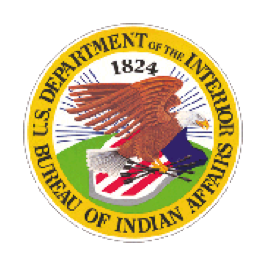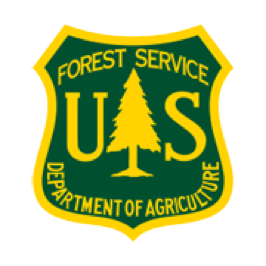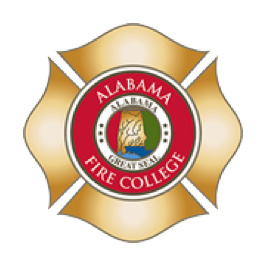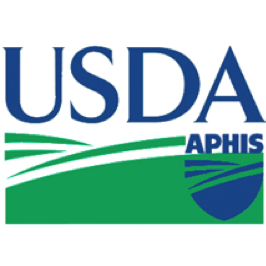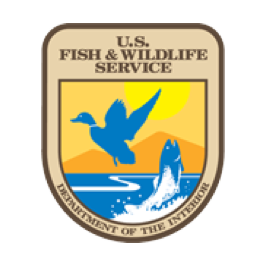Summer 2020 – Native American Fish And Wildlife Society
MESSAGE FROM THE NAFWS PRESIDENT
|
|
|
EXECUTIVE DIRECTOR’S MESSAGE
|
|
|
Recovering America’s Wildlife Act (RAWA) Passes in HouseBy: Elveda Martinez, NAFWS President
|
|
We received some great news on July 1st, 2020 from Sean Saville, Campaign Manager, Alliance for America’s Fish and Wildlife, Association of Fish & Wildlife Agencies, of which the Society is a member of. He emailed us the following:
“I imagine some of you were watching earlier today when the “en bloc Part E” grouping of amendments containing the Recovering America’s Wildlife Act was adopted by voice vote on the House floor and was then included in the final infrastructure package, H.R.2. Then moments ago the House voted to pass HR2, the Moving Forward Act along with the Recovering America’s Wildlife Act!
It is worth noting that the group of amendments that included the Recovering America’s Wildlife Act was the only bipartisan “en bloc” being considered and was praised by several Representatives on both sides of the aisle as such. Both Representatives Dingell and Fortenberry gave eloquent speeches on behalf of the bill on the floor. This will position us well to leverage that bipartisan support and make a case for passage in the Senate.
It is a great day for conservation, for the country and our economy and for the campaign to pass this game changing fish and wildlife conservation funding legislation. Thank you all for your continued help and support as we advance the bill toward ultimate passage. This gets us one BIG step closer! Thank you everyone for all your efforts to get us to this point, especially rallying in the last few days under some really tight timelines to make strategic touches to congressional offices. Special thanks to Collin O’Mara and Jeff Crane for all their leadership as co-chairs of the campaign and work behind the scenes to advance the legislation further than it has ever come before.
Now it is on to the Senate and we’ll look forward to working with everyone to redouble our efforts and build on the incredible bipartisan support this bill and this concept have amassed in the House process to advance the bill in the Senate.
The Society RAWA Tribal Coalition, member Tribes and the National Wildlife Federation have been instrumental in pushing this legislation forward. The passage of RAWA will be great for Tribal conservation. The Society will continue to work on this important legislation.
|
|
|
Consevation Law Enforcement Officer Update
|
|
|
NEW NAFWS MEMBER TRIBEQUAPAW TRIBE MANAGES ITS OWN CONSERVATION PROGRAMSBy: Michelle Bowden, Quapaw Nation Environmental Agriculture Specialist The Quapaw people have been an agricultural society that relied on the land for sustenance. The original villages were located at the confluence of the Arkansas and Mississippi Rivers. They knew how to grow crops in a way that complemented each other such as the 3 sisters where the corn would grow tall and allow the beans to hold tight and replenish the earth to provide nutrients for the squash that would sprawl along the ground and provide protection for the soil to keep it moist and cool to reduce erosion. The crops worked together with each other such as sisters do. In 1818 and 1824, the Quapaw people were forced to relocate from their territory in Arkansas to the northeast corner of Oklahoma (Indian Territory), a land that was thought to be useless by the United States until the early 1900 when there was the discovery of lead and zinc. This discovery brought about an abundance of mining operations. The lands were mined and milled until about the 1960’s. When the mining ceased, huge volumes of mining waste were left on the surface. An estimated 140 million tons of waste was left behind on Quapaw lands. As the mines filled with water, acidic mine water was generated and began flowing into surface waters, severely impacting surface water quality. In 1983, Tar Creek was officially added to the National Priorities (Superfund) list. The Quapaw Nation is unique in that it is the first Native American government to control Superfund site remediation activities on its own lands. The Quapaw Nation Environmental Department leads this effort by working with the EPA to implement best management practices on reclaimed lands. As of 2020, the Quapaw Nation has removed 3.3 million tons of mining waste and completed remediation of 350 acres, with approximately 700 acres currently in progress. The Environmental Department also continually monitors air quality and does soil and water sampling within the remediation sites. In 2014, Quapaw Nation and Quapaw Service Authority joined the Environmental Quality Incentive Program created by the United States Department of Agriculture (USDA) and the Natural Resources Conservation Services (NRCS). With the assistance of USDA and NRCS, Quapaw Service Authority developed a plan to promote agricultural production and protect the environment by implementing practices that optimize environmental benefits and land conservation practices. Current conservation efforts that the Nation has implemented include:
-Exclusion fencing to reduce erosion and watershed damage -High tunnel w/drip irrigation to conserve water -Pollinator habitat to protect pollinators -Brush management to create desired plant community and improve forage for livestock and wildlife -Introduction of our bison program, bison helps create habitat on the Great Plains for many different species, including grassland birds and even many plant species. As bison forage, they aerate the soil with their hooves, which aids in plant growth, and disperse native seeds, helping to maintain a healthy and balanced ecosystem. The conservation efforts are a very important aspect of remediation in the Tar Creek Superfund site. Once an area has been cleared, every effort is made to put that land back into production. Clean soils can be used for row crops or pasture land for cattle while smaller areas may be used for a wetland. With the successful implementation of conservation practices on Native American working agricultural lands, the Quapaw Nation and Quapaw Service Authority continued to focus on increasing and improving conservation practices, improving water, soil and air quality, creating and improving wildlife habitat and the education of other Tribal or Non-Tribal entities on the advantage of the environmental conservation program. Quapaw Nation works with colleges and universities nationwide to provide educational and technical support. For example, Pittsburg State University did a bird study within the Tar Creek Superfund site to determine the impact that mining has had on the wildlife. They found that birds have adapted to chat and actually nest within the piles that are abundant. They were also able to show that after remediation woodland species moved out and grassland species moved in. The University of Oklahoma has also worked with the Quapaw Nation to do a feasibility study for development of a passive treatment system for the acid mine waters that have permeated the surface water in Tar creek. Most recently, Harvard University completed a feasibility study to install a biodigester at the tribal casinos to reduce waste sent to a landfill. Quapaw Nation’s leadership has pledged full support of the ongoing remediation and conservation efforts through tribal policies. In 2018, the Quapaw Nation Business Committee signed a resolution to enact a code providing the management, conservation, and protection of Quapaw Nation agriculture, food source, wildlife, livestock, and other renewable resources. A year later, the Committee signed another resolution establishing the Quapaw Nation Conservation District and developed a partnership between the new conservation district and the USDA that allows us to manage our own conservation activities on tribal lands.
|
|
|
|
(Left:) Mining waste (chat) left from mining operations (photo courtesy Oklahoma Department of Environmental quality); (right): Morgan Smith 2020 summer agriculture intern planting pawpaw seeds. |
|
|
|
(Left:) Quapaw Nation bison herd; (right): pollinator habitat. |
|
|
NAFWS Hosts Alternative Summer Youth Virtual Practicum
|
|
|
|
|
|
|
|
TWO BIOLOGISTS JOIN STAFF AT THE NAFWSTwo new staff biologists have joined the NAFWS staff. They are Sean Cross and Corey Lucero. They are each working from their home areas in Montana and New Mexico. Corey Luceo started in May as a Fish & Wildlife Biologist. She resides in New Mexico and will be working with tribes in the Southwest Region, Northeast Region, Southeast Region, and in parts of Alaska. She formerly worked with the NAFWS in (2003-2011) as a Biologist with the Chronic Wasting Disease Project. She is a member of the Sauk and Fox Nation of Oklahoma. Her career in Natural Resources began in (1993) when she interned with the USDA Forest Service after completion of her AAS Degree in Natural Resource Management, she then obtained her Bachelors Degree in Wildlife and Fisheries Ecology Management from Oklahoma State University, Stillwater Oklahoma. Corey says, “It is very exciting to be selected as one of the Fish and Wildlife Biologists hired by the Native American Fish and Wildlife Society (NAFWS). I am glad to be back and look forward to assisting our Tribal Nations across the U.S. Throughout my career I have gained valuable experience and have always had an interest in assisting Tribes with their Natural Resources. I have working knowledge in many disciplines related to Wildlife and Natural Resources. Once again I am pleased to be working with a great group of people and hope to meet and assist our Tribal communities.” Sean Cross is part Pend d’Oreille and Kootenai and was born and raised on his mother’s Reservation in Western Montana. He enlisted in the U.S. Army in high school and served with the First Infantry Division during the Persian Gulf War in a Cobra and Apache attack helicopter battalion. After the war he returned home to Montana and used his GI Bill to attain a Wildlife Biology degree from the University of Montana. He says, “I have since worked for the U.S. Forest Service, The Nez Perce Tribe, The Confederated Salish and Kootenai Tribes, The National Wildlife Refuge System and now the NAFWS. I still live the lifestyle I learned from my grandparents and parents in hunting, fishing and gathering plants, and I really enjoy passing this on to my children and young grandbabies.”
|
|
|
|
|
|
Hazardous Materials Free TrainingRoy Stover – Alabama Fire College / Workplace Safety Training |
|
In March 2020 the World Health Organization (WHO) declared Covid-19 a Public Health Emergency of International Concern, and shortly thereafter president Trump declared a nationwide emergency under the Robert T. Stafford disaster relief and assistance act. Ever since, this pandemic has spread to every rural community, towns, tribal lands, cities, reaching nearly every corner of the earth. This corona virus has kept us contained in our homes for months and reorienting the way we interact with each other. There is a high degree of uncertainty due to incomplete, unclear or contradictory information, making it difficult to establish a new normal. Rest assured that the safety and health of our trainees and our instructors is of paramount importance for us here at The Alabama Fire College / Workplace Safety Training. We are following strict guidelines established by the CDC to keep our trainees and our instructors safe in the delivery our much-needed FREE classes to Native American Tribes and others in Alabama and around the country. We will work with you to ensure the safest environment to deliver our classes. Here is the list of FREE classes that will be available at the beginning of our new (five year) grant period starting in August 2020: • Hazmat First Responder Awareness (8hrs) • Responder Safety Awareness (8Hrs) • Illicit Drug Response (8Hrs) • ICS 100/200 Basic Incident Command System (24Hrs) • ICS 300 Incident Command System (21Hrs) • ICS 400 Incident Command System (15Hrs) • Hazmat First Responder Operations (40Hrs) • HAZWOPER – Hazardous Waste Site Worker (40Hrs) • HAZWOPER – Hazardous Waste Site Worker refresher (8Hrs) These classes are intended to prepare tribal first responders, like fire fighters, law enforcement officers, and emergency medical personnel to respond safely to natural or man-made disasters. Other agencies that may support emergency responders like hospital, public works, housing, transportation, and others can be included in the training as well. If you are interested or know someone who might be interested, or simply have a question on our free courses, please E-Mail Roy Stover at: [email protected] or call: 205-655-6572 extension 3, or cell: 205-617-6090.
|
|
|
|
Photos by Roy Stover – Tribal first responder officers involved with past trainings by the Alabama Fire College HazMat Training. |
|
|
SUBSISTENCE LIVING IN TWO ALASKAN NATIVE VILLAGESBY: Karen Lynch, NAFWS In the past months since the pandemic, so many people experienced uncertainty. Tribes across the nation felt it as well, and in Alaska, a tribal village in the interior was growing food while another area in western Alaska, the food cycle of subsistence continued as normal as possible.
At the village of St. Mary’s in Alaska, which is located in south-western part of Alaska is a Yupiq community with a population of 567 (2018, Wikipedia). It is joined with another community of Andreafsky.
Many tribes in Alaska depend on their cultural foods for sustenance. The Prince family have lived a subsistence lifestyle all their lives. The family includes Charles, his wife Ursula, and their four kids and three grandchildren. Charles said they have not been too affected by the pandemic. “We are affected by the airline services which has slowed, meaning products are not going to be available at the local stores. It also means our postal services are slower too.” At Nulato, Alaska, a village located in the Interior of Alaska and situated on the west bank of the Yukon River is a small community of 271 (2012 Alaska Labor Estimate). The vast majority living there are indigenous Athabaskan, Yupik, and Inupiaq populations.
Arnold Demoski is the the Nulato Tribe’s natural resource coordinator. He says the shutdown from the pandemic so far had not caused any food issues. “When it first started in March, we were allowed to harvest one moose.” He said the important thing his village is concerned about is the low king salmon run that takes place at this time of year. Salmon is their main food source. The food source for most people along the Yukon River. “It’s very worrisome to people here and many are getting agitated, they’re frustrated,” he said. “We’ve been shut down from fishing and I’m a conservative minded person so I’m okay with being shut down from fishing. If the fish numbers are not there for us, then I’m all for it.” He said they could find other food to supplement for any low fish numbers. “We are allowed to take more wild game if we need to. Or we can target other salmon species.” With tribes and villages in Alaska, they’ve experienced low salmon runs for years, even decades. Demoski said that since the historic numbers are not being reached anymore, they are trying to rebuild the salmon run size and doing what they can by taking less fishing time and by using smaller nets. Even though it seems unsuccessful it is frustrating he said. However, there are days when the run is higher than others. “Like today, there was 9,000 salmon and close to 12,000 yesterday. This number allows everybody to breath a little bit more and gives us hope.” At the village of St. Mary’s, Charles and his family also supplement their diets through buying food at a local grocery store such as rice, potatoes, and onions which goes well with their meals which have meat. They said that the high cost of other items are almost out of the question. For example, he says $20 for a 30.5 oz can of coffee, $8 for 18 pack of eggs, and fuel costs $6.42/gallon. Hunting and gathering for the Prince family means following the seasonal cycle: In winter, “we hunt for rabbit, ptarmigan, moose, and caribou/reindeer.” Charles said ice fishing in winter is for white fish, we set the nets under the ice and it is safe enough, “we check the nets daily or every two days. We usually fish until April.” Charles’ wife Ursula, keeps busy in the spring after the ice and snow have started to melt, she said they collect wild rhubarbs, fiddle head ferns, and wild greens which is like spinach. Then by summer months when the salmon runs start, “most people in our village are collecting salmon, coho, summer chum, chinook, and reds. As soon is the fish become dry we pack it and store it in buckets or sealed bags for winter eating. Then they start their berry harvest.
“Usually we get cloud berries (salmon berries) that are collected first, then followed by blueberries and raspberries. We also collect blackberries and cranberries that are ready for collecting during the fall season, then we start setting the white fish nets and moose season begins.” This starts in August through March. Moose harvests are open season which is set by the Alaska Department of Fish and Game that allows harvest of moose beginning in August. “We try to go in September usually when it starts to cool down,” Charales said. “We go in a skiff (boat) and travel 100 miles one way. And if we go in the winter, we have to take a snowmobile.” If successful with the moose hunt, we cut the neck to let the blood drain out before butchering it, says Ursula. “We utilize all parts except the fur and guts. It is much the same as if we were to get a caribou or reindeer.” Although the salmon run is lower than predicted this year, Ursula said, “right now the berries are almost ready to harvest and from what people are saying, there’s not too much. “Our weather for some time has been crazy. Sometimes we see lots of rain during the winter months, other years not too cold, last year we had a cold spell and we had a good snowfall but all powdery snow.” It is not common at St. Mary’s if community members grow their own food. Ursula said she knew of only one person in her village that has an outdoor garden. In Nulato, Demoski said they have more people gardening than ever before. “I think a lot of people are preparing especially when the pandemic started but then we’ve had a gardening community for a long time too. We order seeds for the community and we get bulk seeds and we pass it out to our community people who are gardening.” As far as anyone wanting to travel away from the community, Demoski said Nulato is still in lockdown. “If we want to travel out of town we are required to fill out a paper and let the authorities know when we are coming back.” No cases of the virus have affected either of the two Alaskan villages. Ursula said so far, “thank God we have no cases here.
“Thankfully, there are no cases here said Demoski, “our leaders are doing everything they can to protect us. We’re really trying to keep our elders and youth safe.”
|
|
|
|
Foods that the Prince family harvest: (L-R) blueberries ready to be picked; herring eggs on kelp which are collected from north of St. Mary’s about 200 miles away; family enjoying chinook or Yukon King which they refer to these fish strips; fish hanging is summer chum; and their son, Frank holding a chee fish which is used for Eskimo ice cream. PHOTOS BY Ursula Prince
|
|
|
|
(Photos L-R): A group of whalers are skinning a beluga whale that was harvested in late fall before they migrated. This event happened in the ocean, miles from land; meat in pan is moose meat; a bucket of cloud berries which they also call salmon berries is picked by the Prince family; Ursula carrying the hind quarters of a moose; and eggs from a goose (small ones), crane (brown), and swan egg (largest one).
|
|
|
|
Three Tribes in the Colorado River Basin Discuss Water Rightsby: Karen Lynch, NAFWS Recently, there was a webinar to discuss the water rights of tribes in the Colorado River (CR) basin in regards to the Colorado River Basin Drought Contingency Plan: A Tribal Perspective. It was hosted by the Institute for Tribal Environmental Professionals and featured three tribal perspectives. The three presenters were: Darryl Vigil, Water Administrator, Jicarilla Apache Tribe; Jason John, Navajo Nation Department of Water Resources; and Nora McDowell, Project Manager, Fort Mohave Indian Tribe.
The 29 tribes included in the upper and lower basin are included in the Drought Contingency Plan developed through a water conservation agreement between the U.S. Reclamation, U.S. Department of Interior, and the states of Utah, Arizona, New Mexico, Colorado, Wyoming, California, and Nevada. It was signed in May 20, 2019. Out of these 29 tribes, ten tribes “Have come together to claim their seat at the table and raise their voices in the management of the Colorado River as water challenges persist. Formed in 1992, the goal of the Ten Tribes Partnership is to increase the influence of tribes in the Colorado River management and provide support for the protection and use of tribal water resource.”
The Drought Contingency Plan (DCP) said Daryl Vigil is the extension of the 2007 guidelines which regulates water use and the Bureau of Reclamation and the seven basin states determined were going to be the operational guidelines for the Colorado River and “tribes were not included or invited in that conversation.”
What needed to happen said Vigil was to build a DCP and agreed upon and signed off on by the seven state sovereigns including NM and the federal government so to build on exclusion or lack of inclusion from the ’07 guideline process. “With Reclamation we take them at their word that there was incredible intent to do outreach to tribes through the DCP process but as you see, the DCP process is really about making sure adequate water covers the basic needs of larger municipalities; in the event that lake levels due to climate change and over the supply demand and imbalance that exists right now and to insure that if the lake got down to a certain level then how would we share the shortage?” In the 10 years that Vigil has been the water administrator, he said he has seen impacts to the tribes and what is important to understand is: “when we developed the 10 tribes partnership and the mission statement that the unique nature of indigenous people and their designation as sovereigns is that each of the 29 tribes is unique and individual.”
With the Navajo Nation (NN), one of the tribes in the partnership is dealing with a large need of water for the tribal communities. Jason John, Water Director, Navajo Nation Department of Water Resources says there is need for coordination not just within his tribe, but also with Arizona, New Mexico, and Utah. This includes the divided basin which goes right through the middle of the Navajo reservation.
John said that the NN has been dealing with their need to access the Colorado River water for decades. “More than 90% of water use on the NN is from ground water resources, and those resources vary by basin and by state, and we have over 100 different public water systems that supply Navajo families and businesses on the NN. Yet, there is still many people who do not have access to water.”
He stressed that firstly, the NN must settle its water rights in AZ before any water can be delivered to communities in AZ. “It is not in our control,” he said. “There’s many strings attached. We have to come to an agreement with the Hopi Tribe and other parties in the basin before discussing a Drought Contingency Plan. Although the tribe came to an agreement in 2010, in a settlement for water on the west side of the reservation from Lake Powell and we spent years in negotiation and it was agreed by all in the basin and approved by tribes with many public meetings, then at the end of the day when we were ready to go to Congress, we were told that it was too expensive.” Despite this set-back, he said there is some good news: “The Utah Settlement that was approved by the NN in 2016 which was also approved by the Senate earlier this month. We face obstacles and we’re still working with the stakeholders in providing water to the NN people and we’re willing to work with all these states and agencies when it comes to management of the CR supplies.”
Nora McDowell, who is the Project Manager at the Fort Mohave Indian Tribe discussed her tribe’s water rights history as a water user of the Colorado River that started in the 1960’s resulting in the tribe securing its protective water rights which recognizes the Western Water Law principle: first use-first-in-right, or because of their long occupancy in the Mohave Valley. She said the Mohave Tribe went through the legal route to prevent dissolution of reservation land in securing its rights to the Colorado River to which she says is not fully developed. “In Arizona vs. California, it took our tribe 30 years, a lot of time and money and resources, which the tribe did not have back then. The process involved the tribes (Colorado River Tribes, Quechan, Cocopah) coming together with congressional support and many attorneys discusssed water useage and compromises made and it did go before the Supreme Court and the judge went in favor of tribes.” She added, “so there is hope. It can be costly and could take a long time.”
McDowell says that in regards to the DCP, tribes are not creating the shortage because we’re not even using our full entitlement. The states have to think about their uses. Tribes shouldn’t have to give up anything or participate in the shortage because, we either use the water on the CR or lose it. So it could go to the next entitlement or holder who has the next priority.
The Fort Mohave tribe is called AhaMakav which means People of the River. McDowell said we all have the responsibility to carry with us the importance of water and the efforts we make now to continue to have a seat at the table with the decision-makers at the top, to the local, state, and federal levels, we can unify collective voices and be heard and demand accountability for water justice.
In closing remarks, Vigil said it is urgent to address these issues. In looking at the science end of it, in the 2009 Basin Study, it said that we’re already in a supply and demand imbalance of one million acre feet and was projected that by 2050, it would be 3 million acre feet. So we’re already operating at one million acre foot deficit. Tribes collectively already have rights to 20% or more of the river and as a result of climate change, that percentage could be up to 25%. So as the resource dwindles and with climate change, the percentage of tribal water rights in the basin increases. |
|
|
|
|
|
Call for Papers – Wildlife Management on Tribal Lands Tribes have ownership or jurisdiction over some of the wildest, most wildlife-filled areas of North America. This is no accident: in addition to a deep reverence for the land and strong history of environmental stewardship, tribes have been conducting some of the best fish and wildlife management practices and projects around. This is a story that is largely not told – but it should be. We believe that the fish, wildlife, and habitat management and research conducted by or occurring on tribal lands would be of interest to the wildlife managers and the general public. We are developing a volume of essays written by tribal fish and wildlife managers or researchers about the work they do. On July 3, we signed a contract with Johns Hopkins University Press, a well-respected academic institute, that will publish and publicize the volume. All profits from the book for three years will benefit the Native American Fish and Wildlife Society. After three years, all material will become open-source. Potential topics include: Case studies of successful and innovative projects; Traditional Ecological Knowledge (TEK); Cultural importance of key species; History of modern fish and wildlife management on tribal lands; Legal battles for treaty rights, management authority, and funding; Tribes and the Endangered Species Act; First foods and food sovereignty (e.g. salmon and northwest fisheries); Other fisheries management; Migratory bird management, and many others. Some chapters will be written at the level of a peer-reviewed journal article or opinion essay. Others will be short case studies – summaries of successful, innovative, or instructional projects or episodes. There is also room for first-person or other opinion pieces on topics of interest, and interviews with tribal elders about traditional wildlife management or other topics. All articles should be written with the express permission of the tribe or tribal land management authority involved. Do you have an idea for a chapter or section? We’d love to hear from you! Or, if you have any questions or want to talk about an essay idea, please feel free to contact the editors: Steven Albert ([email protected]), or Serra J. Hoagland ([email protected], 406-275-4067).
|
|
|
|
© 2020 NAFWS Native American Fish & Wildlife Society
10465 Melody Dr., Ste. 307
Northglenn, CO 80234
303-466-1725
https://nafws.org |








